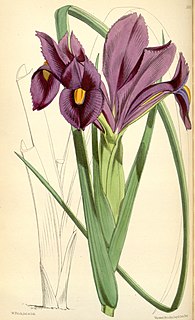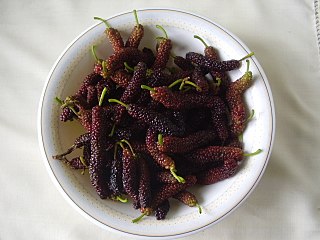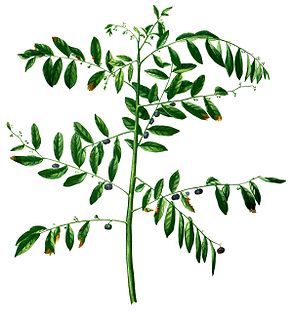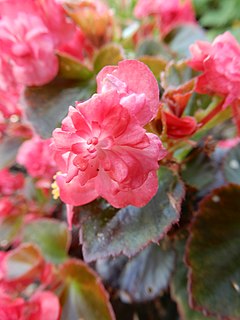| Ryania speciosa | |
|---|---|
| Scientific classification | |
| Kingdom: | Plantae |
| Clade: | Angiosperms |
| Clade: | Eudicots |
| Clade: | Rosids |
| Order: | Malpighiales |
| Family: | Salicaceae |
| Genus: | Ryania |
| Species: | R. speciosa |
| Binomial name | |
| Ryania speciosa M.Vahl | |
| Synonyms | |
Tetracocyne angustifolia Turcz. Contents | |
Ryania speciosa [1] [2] is a species of plants in the family Salicaceae. [3] [4]
In biology, a species is the basic unit of classification and a taxonomic rank of an organism, as well as a unit of biodiversity. A species is often defined as the largest group of organisms in which any two individuals of the appropriate sexes or mating types can produce fertile offspring, typically by sexual reproduction. Other ways of defining species include their karyotype, DNA sequence, morphology, behaviour or ecological niche. In addition, paleontologists use the concept of the chronospecies since fossil reproduction cannot be examined. While these definitions may seem adequate, when looked at more closely they represent problematic species concepts. For example, the boundaries between closely related species become unclear with hybridisation, in a species complex of hundreds of similar microspecies, and in a ring species. Also, among organisms that reproduce only asexually, the concept of a reproductive species breaks down, and each clone is potentially a microspecies.
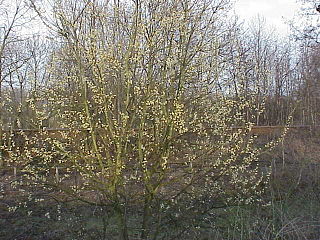
The Salicaceae are a family, the willow family, of flowering plants. The traditional family included the willows, poplar, aspen, and cottonwoods. Recent genetic studies summarized by the Angiosperm Phylogeny Group (APG) have greatly expanded the circumscription of the family to contain 56 genera and about 1220 species, including the Scyphostegiaceae and many of the former Flacourtiaceae.
The species is significant partly because the ryanoid insecticides are derived from, and have the same mode of action as the alkaloid ryanodine, which was originally extracted from this South American plant, which is also used as a piscicide. [5]
Ryanoids are a class of insecticides which share the same mechanism of action as the alkaloid ryanodine. Ryanodine is a naturally occurring insecticide isolated from Ryania speciosa.
A mode of action (MoA) describes a functional or anatomical change, resulting from the exposure of a living organism to a substance. Some sources consider the mode of action to be only at the cellular level. In comparison, a mechanism of action (MOA) describes such changes at the molecular level.

Alkaloids are a class of naturally occurring organic compounds that mostly contain basic nitrogen atoms. This group also includes some related compounds with neutral and even weakly acidic properties. Some synthetic compounds of similar structure may also be termed alkaloids. In addition to carbon, hydrogen and nitrogen, alkaloids may also contain oxygen, sulfur and, more rarely, other elements such as chlorine, bromine, and phosphorus.

